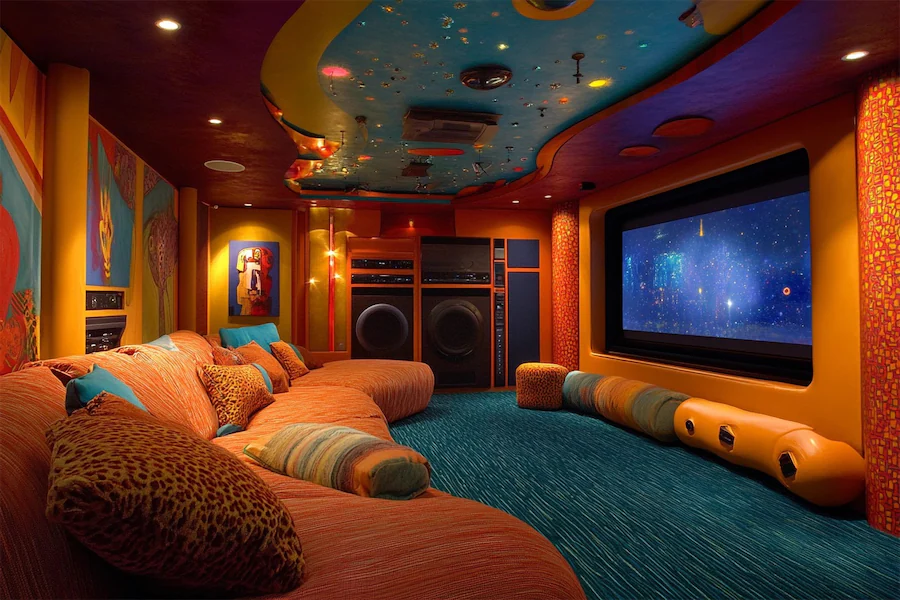Designing a Postmodern entertainment room involves embracing bold colors, eclectic patterns, and unconventional forms to create a space that is both playful and sophisticated. Here’s a comprehensive guide to achieving this distinctive style:
Introduction to Postmodern Entertainment Rooms
Postmodern interior design emerged in the late 20th century as a reaction against the minimalism of modernism, favoring eclecticism, irony, and a blend of different styles and periods. In an entertainment room, this translates to a vibrant and dynamic space that challenges traditional design norms.
History and Origins of Postmodern Style
Postmodernism began in the late 1970s and gained prominence in the 1980s and 1990s, characterized by a departure from the strict rules of modernism. It embraced diversity, contradiction, and the blending of high and low culture, often incorporating elements from various architectural styles and historical periods.
Key Features of Postmodern Entertainment Rooms
- Bold Colors: Utilize vibrant hues such as deep pinks, blues, or bright yellows, often in unexpected combinations, to create a lively atmosphere.
- Eclectic Patterns: Mix and match geometric patterns, abstract designs, and textures to add visual interest and complexity to the space.
- Unconventional Furniture: Incorporate furniture with unique shapes and forms, such as asymmetrical sofas or sculptural chairs, to serve as statement pieces.
- Playful Lighting: Use neon lights or fixtures with unusual designs to inject whimsy and highlight the room’s focal points.
- Mix of Materials: Combine materials like metal, glass, and plastic with traditional ones to create contrast and depth.
Applications of Postmodern Style in Entertainment Rooms
- Seating Arrangements: Arrange seating to encourage interaction, using a mix of vintage and contemporary pieces to reflect the eclectic nature of postmodern design.
- Entertainment Centers: Opt for media consoles that serve as focal points, perhaps featuring bold colors or unconventional shapes, to align with the room’s aesthetic.
- Decorative Elements: Incorporate abstract artwork, quirky accessories, and patterned rugs to enhance the room’s dynamic and playful character.
Considerations When Designing a Postmodern Entertainment Room
- Balance: While embracing bold elements, maintain a sense of cohesion to prevent the space from becoming overwhelming.
- Functionality: Ensure that the room remains practical for entertainment purposes, with comfortable seating and appropriate technology integration.
- Personal Expression: Incorporate elements that reflect your personality and interests, as postmodern design celebrates individuality and creativity.
Conclusion
A Postmodern entertainment room offers a unique and engaging environment that challenges conventional design norms. By combining bold colors, eclectic patterns, and unconventional furnishings, you can create a space that is both entertaining and reflective of personal style.
